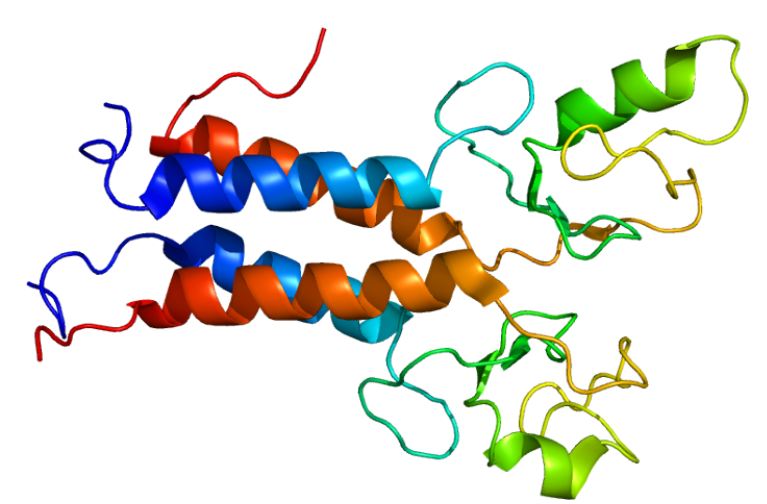Angelina Jolie and The Supremes
The LAW FIRM OF DAYREL SEWELL, PLLC is pleased to announce that Mr. Sewell’s article, entitled “Unanimous U.S. Supreme Court and Angelina Jolie: BRCA1 & BRCA2 Patentability”, is a featured cover story in this month’s issue of Intellectual Property Today™. Featured articles emphasize developments in cutting edge technology and their effect on intellectual property law practice.
On June 13, 2013, the Supreme Court of the United States issued its unanimous, landmark decision in the long-awaited and much anticipated case of Association For Molecular Pathology et al. v. Myriad Genetics, Inc., et al. That same day, the decision was prominently featured on several world news media outlets and firmly grasped the attention of more than just the intellectual property community.

BRCA1 protein
At issue before the Supreme Court, are nine of Myriad’s composition claims from three of its patents. The central issue presented to the Court is whether “a naturally occurring segment of deoxyribonucleic acid (DNA) is patent eligible under 35 U. S. C. §101 by virtue of its isolation from the rest of the human genome.” The Supreme Court makes clear that extensive discovery efforts will not result in otherwise ineligible law of nature claims transforming into a patent. The future implications surrounding other issues of gene patentability was addressed, in part, by the Court. Besides finding cDNA patent eligible, the Supreme Court carefully crafted its decision to state that its ruling does not implicate method claims or new applications of knowledge about the BRCA1 and BRCA2 genes. To this end, expect to see a marked increase in the number of patent applications claiming methods for genetic sequence isolation as well as new applications of knowledge. Additionally, Myriad—and those that enjoyed isolated DNA patent exclusivity—will likely have an advantage when applying for genetic sequencing method patents because a previous effect of the claims at issue was that said claims effectively precluded others from performing the method that yielded the isolated DNA. Since 1994, Intellectual Property Today™ continues to be a leading, national law publication that focuses on legal issues in patent, trademark, and copyright law. You are encouraged to comment on this article and to receive free updates by subscribing to the firm’s Blog and Press Release sections. Thank you.

admin
Aria Diagnostics, Inc. v. Sequenom, Inc. (N.D. Cal., October 30, 2013; 3:11-cv-06391-SI) is one of the first cases to doctrinally apply the U.S. Supreme Court’s Myriad decision. The issue before the Court was whether the steps of the claimed methods in Defendant’s U.S. Patent No. 6,258,540, applied to the natural phenomenon of cffDNA in maternal plasma or serum, are sufficient to render the claims patentable.
Judge Illston sided with the Plaintiff and agreed that the method steps contained in claims 1, 2, 4, 5, 8, 19-22, 24, and 25 of the ’540 patent do not add enough to the natural phenomenon of paternally inherited cffDNA to make these claims patentable under § 101. Thus, said claims are not drawn to patent eligible subject matter and are invalid under 35 U.S.C. § 101.
Going forward, it will be interesting to see whether other jurisdictions will uniformly apply Myriad’s holding.
B. Gantt
Congratulations on the publication! As a female lawyer the issue of patentability of potentially life-saving discoveries is interesting from both a legal and real life point of view.